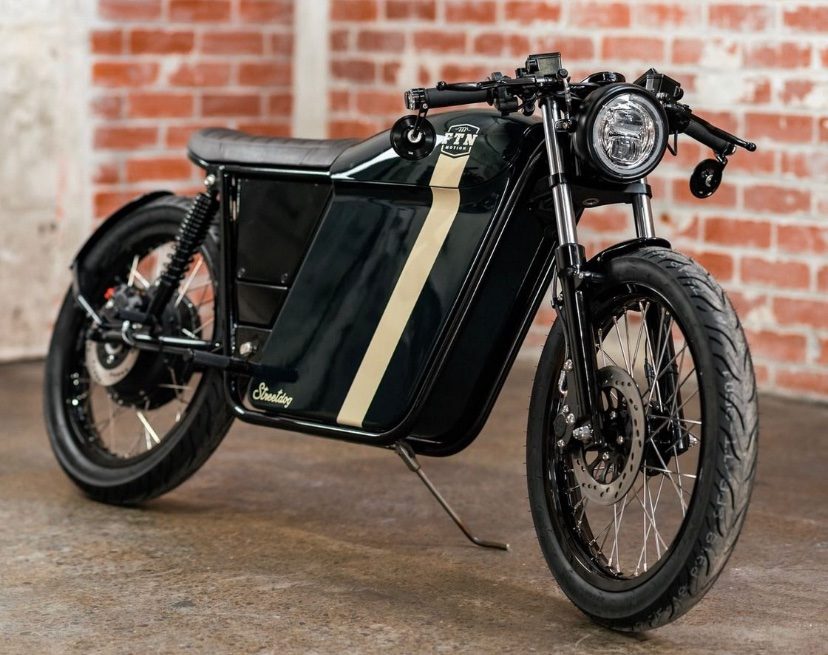Silent Speedsters and Gasoline Ghosts: Dueling Legacies in Urban Mobility
The article discusses the advantages of both electric and petrol mopeds in terms of performance and features. It highlights the instant torque and acceleration, regenerative braking, quiet operation, and low maintenance of electric mopeds. On the other hand, petrol mopeds offer a classic combustion engine feel, extended range, customization options, and the advantage of an established refueling infrastructure. The choice between the two depends on the rider's preferences, environmental considerations, and the local infrastructure.
1/29/20243 min read
The FTN StreetDog, a NZ-designed and built eMoped. The "Boost" package gets access to 5KW of engine power and a max speed of 55KMH.
Silent Speedsters and Gasoline Ghosts: Dueling Legacies in Urban Mobility
Mopeds have traditionally served as an accessible entry point into motorized transportation, offering simplicity in both their power output and transmission. For many years, riders looking to enhance their moped's performance had only the aftermarket to turn to. However, with the recent elimination of the moped power cap in New Zealand, there's an exciting new horizon for these vehicles.
Imagine a moped that channels the spirit of a 1970s GP racer, equipped with swift acceleration to reach 50 kph - outpacing any other road-legal vehicle from a standstill. Such a machine would embody the essence of convenience and performance, tailor-made for the dense urban landscape where rapid acceleration to the legal speed limit can make all the difference in navigating busy streets efficiently. This concept isn't just a return to the nostalgic heyday of racing; it's a forward-thinking vision for a moped designed to excel within the legal confines of city life, promising a thrilling and practical urban commuting experience.
Electric Moped Performance:
Instant Torque and Acceleration: Electric motors are known for delivering instant torque, making them ideal for achieving swift acceleration. In the context of the envisioned high-performance moped, an electric motor could provide immediate power, allowing the rider to quickly reach the desired speed of 50 kph. This characteristic is especially beneficial in urban environments where rapid acceleration is essential for navigating traffic efficiently.
Regenerative Braking: Electric mopeds can incorporate regenerative braking systems, converting kinetic energy back into electrical energy during deceleration. This not only improves overall energy efficiency but also enhances the braking performance of the moped. The ability to recapture energy during braking contributes to a more sustainable and eco-friendly urban commuting experience.
Quiet Operation: Electric vehicles operate quietly compared to their petrol counterparts. This characteristic not only reduces noise pollution in urban areas but also provides a more pleasant and serene riding experience. The quiet operation aligns with the modern and eco-conscious image of electric vehicles.
Low Maintenance: Electric motors have fewer moving parts compared to internal combustion engines, resulting in lower maintenance requirements. The reduced need for frequent maintenance contributes to the overall cost-effectiveness of owning and operating an electric moped.
Petrol Moped Performance:
Classic Combustion Engine Feel: A petrol-powered moped can evoke the classic feel of combustion engines, reminiscent of the 1970s GP racers. The sound and vibration from a petrol engine can provide a nostalgic and visceral experience for riders who appreciate the traditional aspects of motorcycling.
Extended Range: While electric vehicles are becoming more advanced in terms of range, petrol mopeds may still have an advantage in terms of range per refueling. This can be advantageous for riders who require longer commuting distances without the need for frequent stops to recharge.
Customization and Aftermarket Modifications: Petrol mopeds have a long history of aftermarket modifications, allowing riders to customize and enhance their performance. Enthusiasts can explore various upgrades, such as tuning the engine, modifying exhaust systems, or upgrading components, providing a hands-on and personalized approach to enhancing performance.
Established Infrastructure: Petrol mopeds can benefit from the existing petrol infrastructure, making refueling widely accessible. This can be particularly advantageous in areas where electric charging infrastructure is still developing, ensuring convenience and accessibility for riders.
In conclusion, both electric and petrol versions of the high-performance moped bring unique advantages to the table. The electric moped excels in terms of instant torque, sustainability, and low maintenance, while the petrol moped offers a classic riding experience, extended range, and a well-established refueling infrastructure. The choice between the two would ultimately depend on the rider's preferences, environmental considerations, and the state of the local infrastructure. The shift towards embracing electric mopeds in New Zealand opens up exciting possibilities for urban mobility, combining the best of modern technology with a nod to the golden era of racing.


